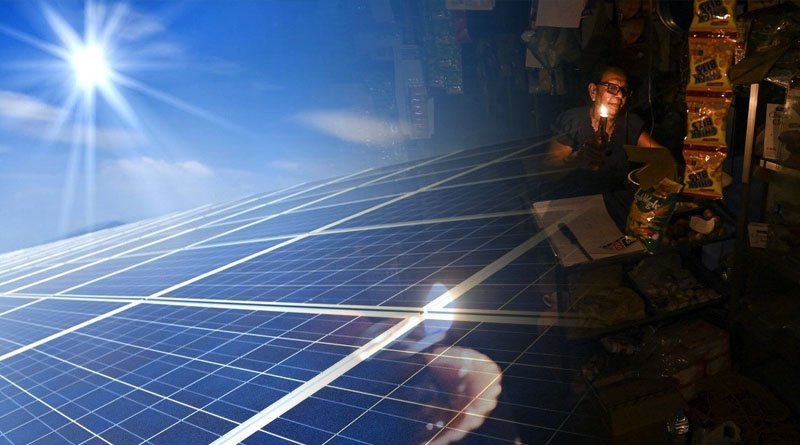The time is now for Pakistan to switch to alternative forms of power generation in order to save valuable foreign currency and advance the country’s industrial and agricultural sectors.

Investigating alternative energy sources has become crucial for reducing the country’s fuel import bill and providing cheaper electricity to domestic, commercial, and industrial consumers in light of the economy’s difficulties and fluctuating fuel prices both internationally and domestically.
The time is now for Pakistan to switch to alternative forms of power generation in order to save valuable foreign currency and advance the country’s industrial and agricultural sectors. The majority of the world’s countries already use solar, wind, and hydropower as a significant portion of their energy base.
Since there hasn’t been much progress in this area recently, the current administration has intensified efforts to reduce rising fuel imports and make it simpler for the public to access clean, green, environmentally friendly, and cheaper solar energy.
To take advantage of solar energy’s vast potential, the government, led by the prime minister, has launched the National Solar Energy Initiative. According to the Minister for Power, the Federal Cabinet has approved a plan to produce solar power instead of spending money on expensive imported fuels.
According to the Federal Minister for Power, “Under this framework, three solar power plants are being planned, with one project in Layyah with a 1200 MW capacity and two projects in Muzaffargarh and Trimmu, each with a 600 MW capacity.”
According to the Federal Minister for Power Division, when these projects are finished, consumers will have access to cheaper electricity. He continued, “This is the vision and commitment of the Prime Minister to prioritise helping the country’s poor people by providing cheaper electricity.”
According to the minister, rural areas would also receive projects with a capacity of 1-4 MW, and both domestic and foreign investors have expressed a strong interest in investing in these projects. The government intends to add more than 10,000 MW of power to the national grid soon, so investors have been briefed on a 600 MW initial solar power project.
He mentioned the government’s emphasis on cleaner and less expensive energy, saying that in recent years, the price of coal and oil had sharply increased on the international market by 300–400%, and that consumers could not afford this increase.
As a result, he said, “all new projects would be based on the potential of wind, solar, hydel, nuclear, and Thar coal, as the cost of solar and wind energy was about 50–60% less than that of other fuel.”
The minister made reference to the steps that were recommended by the Power Division and approved by the Cabinet. These steps included converting the government-owned buildings to solar energy and running the existing power plants during the day on solar energy rather than expensive imported fuel.
He claimed that the government had also approved power subsidies for farmers, who would now be able to purchase electricity at a cost of just Rs. 13 per unit. The 100 MW “Zhenfa Solar Project,” which was just completed in the Layyah district of south Punjab, will also generate less expensive power at Rs 9 per unit.
All ministries, departments, and authorities of the federal government, as well as their provincial offshoots, have been informed by a Power Division official that they will switch to solar energy. “Relevant authorities and stakeholders have been asked to complete the required process by the end of April.”
He added that the conversion of the government buildings to solar power would help to some extent reduce the enormous chunk of the nation’s expensive fuel import bill, which is currently hovering around $27 billion. This initiative would help generate 300 MW to 500 MW of cheap power quickly as part of a larger 10,000 MW power generation plan.
Energy experts believe that alternative energy sources will soon be fully utilized, as the Engineering Development Board (EDB) is currently developing a policy to support local production and help meet the nation’s yearly growing demand for electricity.
“Pakistan has the potential to produce over 2.324 million megawatts (MW) of electricity annually using solar thermal and photovoltaic energy, making it one of the countries with the best solar irradiation in the world,” said energy expert Gul Hassan Bhutto.
According to Bhutto, solar irradiation in Pakistan and India is 1,900 Kwh/m2, compared to 1,500 Kwh/m2 in China and 1,200 Kwh/m2 in Germany. The government’s action is commendable because it will significantly lower the cost of fuel imports and add clean, green, cheaper electricity to the national grid.
Regardless of the angle, he claimed transparent solar was a cutting-edge technology that could be captured and used through windows or any other glass surface. It could revolutionize the solar industry by extending its application.
Imran Imtiaz Butt, the CEO of 3-Ray Solution, asserted that 1.5 hours of nonstop sunlight would be sufficient to end the world’s energy crisis. Around 173,000 terawatts of solar energy reach the earth’s surface every second, which can easily provide 10,000 times more electricity than the current production around the globe.
He asserted that the world’s entire energy needs could be satisfied if solar panels were only placed on 16% of the Sahara Desert’s surface.
The Solarization Project should result in the desired outcomes, but the demand for solar panels will skyrocket. Therefore, it is imperative that the government not only ensure the continuation of these projects but also develop a pricing structure to prevent business cartels from defrauding regular consumers of their hard-earned money.
